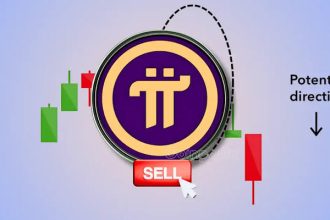The first principle of cryptocurrencies, as put forth by Satoshi Nakamoto, the anonymous creator of the Bitcoin, is intended to be fulfilled by the Pi network, according to its whitepaper. Its goal is to restore the people’s financial power. This is the project’s main driving force.
The Pi network seeks to develop a platform for smart contracts that is user-secured and managed. The Pi utility token will enable the protocol’s goal of creating the most inclusive peer-to-peer (P2P) marketplace ever created.
The network is forced by the entry of wealthy corporations to concentrate on completely decentralizing digital assets into the most important digital asset network, Bitcoin. Only those with enormous financial resources can validate transactions in exchange for the network’s tokens because of how difficult it is to mine Bitcoin. A robust, smartphone-friendly protocol is what the Pi network seeks to create.
Despite having a minimal barrier to admission, the Pi network offers all the advantages of a blockchain-based project. This includes the ability to circumvent censorship, unrestricted business dealings between two parties, pseudonymity, and a level playing field in terms of money.
In order to be future-proof, the Pi development team has made sure that they do not rely on the widely criticized proof-of-work (PoW) consensus mechanism. Instead, the Federated Byzantine Agreement consensus mechanism powers the protocol (FBA). The renowned Stellar Consensus Protocol (SCP), which is how the Stellar blockchain works, is explained in this section.
In contrast to the Stellar network, which relies on organizations and businesses to act as node validators, Pi’s FBA enables common people to use their devices to protect the network while earning rewards.
The Pioneer, Contributor, Ambassador, and Node roles are the four categories into which the Pi network’s framework is divided. On the Pi hierarchical ladder, The Pioneer is the lowest level; it requires a frequent mobile phone user who regularly logs in to mine. For network security, each contributor has a list of Pioneers who work under them. While the Node executes the fundamental SCP algorithm, an Ambassador seeks to expand the network’s membership.
The Pi network, which draws inspiration from first-generation blockchain networks like Bitcoin, aims to create the illusion of token scarcity while preventing a significant portion of the tokens from being concentrated in the hands of a small number of individuals.
The ecosystem of the network of mineable smartphones has been developing. In April 2021, it made available its Phase 2 testbed. Users could now test out the Pi wallet and browser. The first-ever hackathon on the network was introduced as part of phase 3, which was implemented in December 2021.
Due to its incomplete introduction, the Pi currency has no value in terms of fees. Due to the strength of the community, a complete launch would probably result in the crypto currency being listed on centralized exchanges. Long-term coin holders might benefit from a listing on well-known crypto platforms by selling their mined coins.













I am sending you 1π! Pi is a new digital currency developed by Stanford PhDs, with over 47 million members worldwide. To claim your Pi, follow this link https://minepi.com/daiv101 and use my username (daiv101) as your invitation code.